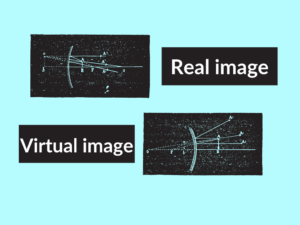Regular and Irregular Reflection: Explained
What is Regular Reflection?
Regular reflection refers to the reflection of light waves where the incident rays of light strike a smooth surface and bounce back in a regular manner. The reflected rays are parallel to each other and maintain the same intensity and wavelength as the incident light. This type of reflection produces a clear image.
Examples of Regular Reflection:
– Mirror reflection
– Reflection from glass windows
– Shiny metallic surfaces
What is Irregular Reflection?
Irregular reflection, also known as diffuse reflection, occurs when light waves hit a rough or uneven surface, causing them to scatter in various directions. The incident rays do not bounce back uniformly, resulting in a diffused reflection. Unlike regular reflection, irregular reflection does not produce a clear and sharp image.
Examples of Irregular Reflection:
– Reflection from a piece of paper
– Reflection from a chalkboard
– Reflection from an orange peel
Differences Between Regular and Irregular Reflection:
| Difference Area | Regular Reflection | Irregular Reflection |
|---|---|---|
| Surface Type | Smooth surfaces | Rough or uneven surfaces |
| Image Formation | Produces clear and sharp images | Does not create a distinct image, only diffuse reflection |
| Angle of Incidence | Angle of incidence is equal to the angle of reflection | Angle of incidence is not equal to the angle of reflection |
| Reflection Intensity | The intensity remains constant in regular reflection | The intensity is diffused and spreads in various directions |
| Wavelength of Reflected Light | Remains the same as the incident light | Remains the same as the incident light |
| Reflection Pattern | Parallel reflection pattern | Scattered reflection pattern |
| Optical Devices | Used in mirrors, telescopes, and lenses | Used in matte surfaces, diffusion panels, and non-glossy screens |
| Image Clarity | Produces clear and focused images | Does not produce clear images, can be blurry |
| Direction of Reflected Light | Reflected light travels in a specific direction | Reflected light scatters in various directions |
| Surface Requirements | Requires a smooth and reflective surface | No specific surface requirements |
Conclusion:
In summary, regular reflection occurs on smooth surfaces, produces clear images, and follows the laws of reflection. On the other hand, irregular reflection occurs on rough surfaces, results in diffused reflections, and does not create sharp images. Understanding these differences helps to explain various optical phenomena and determine the best use of each type of reflection.
People Also Ask:
Q: What are some common examples of regular and irregular reflection?
A: Common examples of regular reflection include mirrors, glass windows, and shiny metallic surfaces. Examples of irregular reflection include reflection from paper, chalkboards, and orange peels.
Q: How does regular reflection differ from irregular reflection?
A: Regular reflection occurs on smooth surfaces, produces clear images, and follows the laws of reflection. Irregular reflection occurs on rough surfaces, results in diffused reflections, and does not create sharp images.
Q: What can irregular reflection be used for?
A: Irregular reflection is used in matte surfaces, diffusion panels, and non-glossy screens to scatter light and reduce glare.
Q: Can regular reflection occur on rough surfaces?
A: No, regular reflection requires a smooth and reflective surface for the incident rays to bounce back uniformly.
Q: How does irregular reflection affect the clarity of images?
A: Irregular reflection does not produce clear images and can cause blurring due to the scattering of light in various directions.


